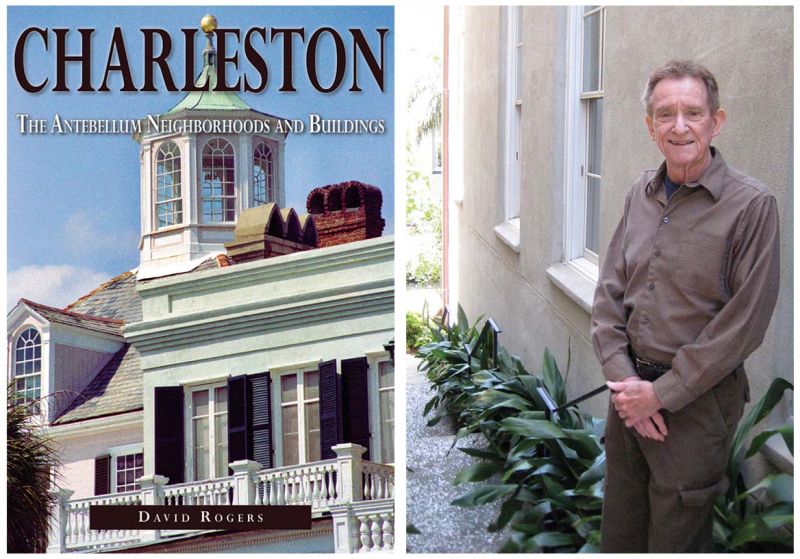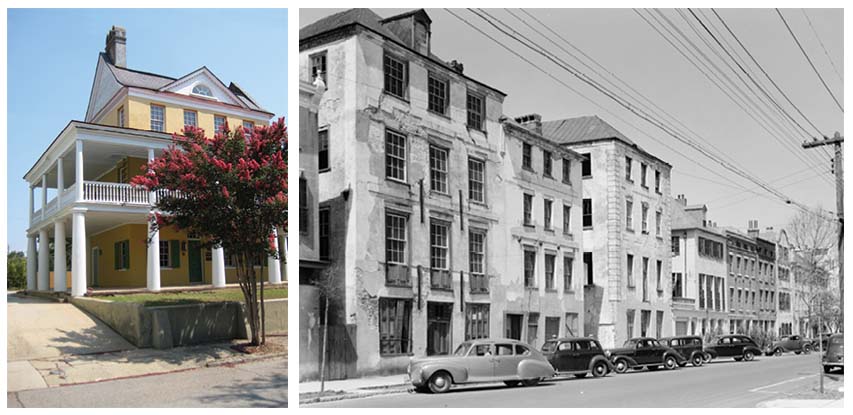It’s part comprehensive reference guide and part coffee-table book

Author David Rogers spent 40 years photographing and researching Charleston’s neighborhoods and buildings.
It’s easy to be smitten by Charleston’s picturesque streetscapes, to be wooed by her lovely homes and stately buildings. But to go from city crush to 40-year exhaustive research project is next-level relationship. Perhaps marriage material. The groom? Meet David Rogers, author of CHARLESTON: The Antebellum Neighborhoods and Buildings (Joggling Board Press, 2020), a thoroughly researched narrative catalog of the Holy City’s 11 original neighborhoods and more than 800 buildings therein.
Rogers’s tome is dense, detailed, and clearly a work of devotion. Anyone who wants to know more about Charleston’s rich layers, her long and complex history, will be happy to add it to their coffee table. Just make sure it’s a sturdy one. “My original idea was a pictorial guidebook about Charleston and its neighborhoods, a paperback to be carried in your pocket,” says Rogers. “Over the decades, dedicated to my subject, the project grew culminating in the unparalleled encyclopedic book now published.”
Rogers, a native of the Hudson River Valley, grew up in a circa-1820 home. When the former media specialist and adjunct professor of literature first visited Charleston in 1983, he was captivated by the city’s enchanting decay. He bought a house South of Broad and began exploring the peninsula’s neighborhoods, camera in hand. He continued photographing the city and researching her people and their buildings for the next four decades.

The book features 1,000 black-and-white photographs, with Rogers’s images of notable homes and buildings often juxtaposed with archival photos from the Library of Congress, creating fascinating before-and-after tableaux that differentiate this book from its predecessors. Other unique aspects include a color-coded neighborhood guide (no more wondering where Ansonborough ends and Cannonborough begins!) and interesting nuggets about the people who once lived in these buildings, as well as pictorial street scenes depicting unvarnished city life.
Part comprehensive reference guide, part coffee-table book, CHARLESTON pays homage to the “mix of dwellings that are grand and those that are humble,” explains Susan Kammeraad-Campbell, founder of Joggling Board Press and publisher of the limited-edition book. For her, the project’s joy has been meeting the current homeowners. Whenever possible, she hand-delivers the book to those who purchase it through Joggling Board. “To them, their home’s walls are flesh and the buildings live and breathe. Their commitment to taking care of these homes for the next generation is huge.”
Rogers and Kammeraad-Campbell understand huge commitment. This book is testimony to years of tedious cross-referencing and fact-checking. Nearly half of the limited run has already been sold. “It will be a rare book before the year is over,” she anticipates. Rare, like a long, devoted marriage. Like buildings that have stood the test of time.